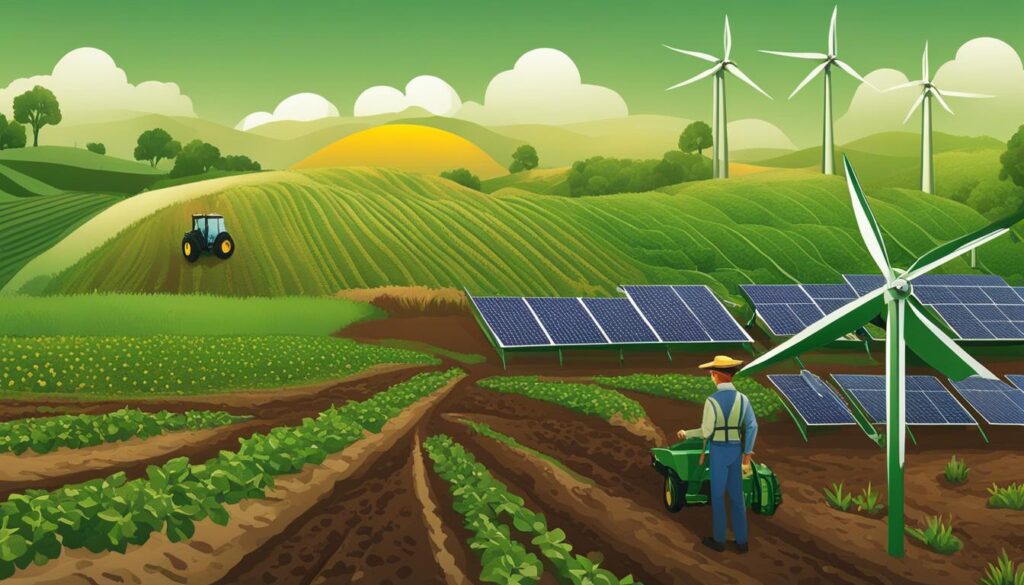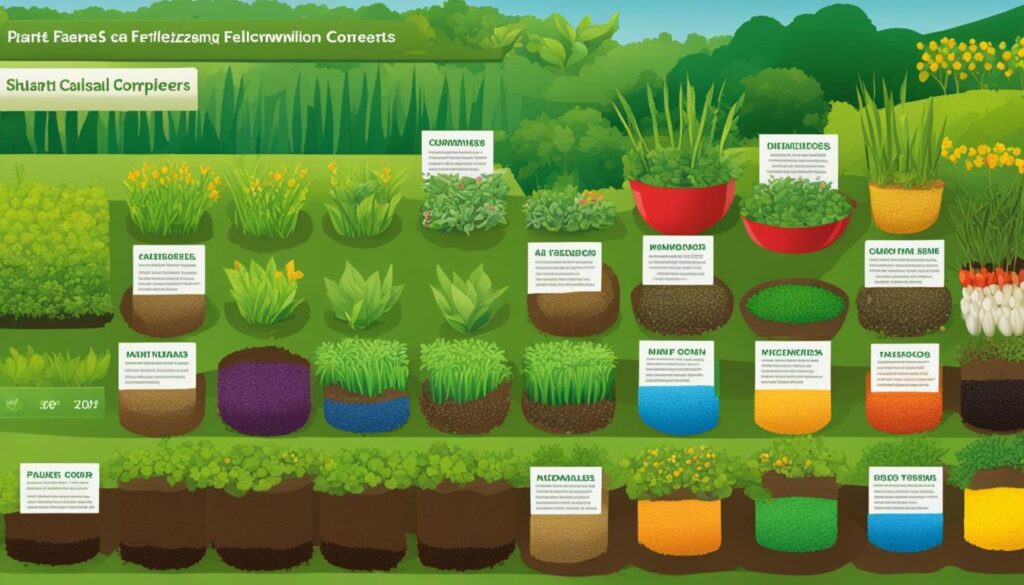As someone who’s knee-deep in the earthy embrace of my own backyard, I’ve come to appreciate the intricate dance between nurturing the soil and reaping a bountiful harvest. Adopting natural fertilizers in my journey to sustainable farming, I have encountered both its immense benefits and certain challenges. Soil health is not just a phrase for hobby farmers like me, it’s a commitment. As I delve into the pros and cons of natural fertilizers, what becomes clear is that organic lawn care is much more than a trend—it’s a potential cornerstone of eco-friendly agriculture.
Key Takeaways
- Natural fertilizers enhance soil health, ensuring a living soil rich in nutrients and microorganisms.
- Organic lawn care promotes sustainability, but requires a sound understanding of the pros and cons of natural fertilizers.
- Using natural fertilizers can lead to more balanced, sustainable farming practices in the long run.
- Finding the right balance of nutrients is critical to avoid under or over-fertilization with organic options.
- Understanding the environmental impacts of natural fertilizers can inform smarter, eco-friendly decisions.
The Essence of Natural Fertilizers: An Overview
As an avid hobby farmer, I’ve always been fascinated by the intricate dance of nutrient uptake in plants. The secret to vibrant crops lies in the delicate equilibrium of giving our plants just enough, but not too much. That’s where the art and science of organic gardening comes into play, specifically through the use of natural fertilizers. Unlike their synthetic counterparts, natural fertilizers promise a buffet of slow-release nutrients that not only feed our plants but also foster soil life and resilience.
Understanding How Plants Utilize Nutrients
My experience in the garden has shown me that plants can be quite picky eaters. They require a plethora of nutrients, each serving a unique function. The beauty of natural fertilizers is their complex organic matter, which doesn’t just dump nutrients into the soil; it unleashes them gradually, as microbes break them down. This slow decomposition aligns perfectly with the natural rhythm of nutrient uptake in plants, ensuring that they get what they need, when they need it.
Organic vs. Inorganic Fertilizers
When contrasting organic versus inorganic fertilizers, it’s like comparing a home-cooked meal to fast food. Inorganic fertilizers offer a quick fix, a rapid nutrient jolt that can lead to runoff and environmental distress. Organic fertilizers, on the other hand, release nutrients slowly as they become integrated into the soil’s life cycle. This nurtures not just the plants but the entire ecosystem within the soil, contributing to the long-term success and sustainability of organic gardening practices.
Key Components and Nutrient Release Rates
While embracing the natural fertilizer pros and cons, it’s crucial to recognize the key players in the nutrient game: nitrogen, phosphorus, and potassium, to name a few. Each organic fertilizer brings its own ratio of these essential nutrients, and understanding their release rates is paramount. Too often, we worry about immediate results and overlook the profound impacts of slow-release nutrients, which support a steady growth pattern and prevent nutrient leeching, making every granule count for something truly green and growing.
Environmental Impact and Sustainability
As someone deeply invested in green living, I’ve always placed a high value on the sustainability in farming. Embracing organic gardening principles not only aligns with my environmental values but also contributes positively to reducing the carbon footprint in agriculture. It’s about making wise choices that prioritize the health of our ecosystems, and that begins with a firm commitment to practices that minimize the environmental impact of fertilizers.
The switch from synthetic to natural fertilizers can seem daunting. It requires a deeper understanding of soil ecology and a readiness to invest more effort into pest management. Yet, it’s an investment in the health of the land and future generations. By fostering richer soil biodiversity, we safeguard our waterways and land from the damage chemical products can cause. My pursuit of sustainable farming isn’t just for my own sake; it’s for the larger community and the natural world that supports us.
Let’s consider the main advantages of choosing an environmentally conscious farming method:
- Protection of local water bodies from hazardous runoff
- Promotion of soil biodiversity enhancing natural ecosystems
- Reduction in the presence of persistent chemicals in the food chain
However, we must acknowledge the increase in labor that accompanies this choice. Vigilant pest control and the application of organic methods do demand more time and personal dedication. But to me, the benefits significantly outweigh the extra work. I am proud to be a part of a growing community that strives for a lower carbon footprint and a healthier living environment through sustainable practices.
Guided by my commitment to sustainability and with an awareness of our shared responsibility to future generations, my approach to farming intentionally minimizes environmental impact while championing a comprehensive vision of green living.

“Cultivate your land with love, respect its nature, and it will return bountifully without harming the world around us.”
A Cost-Benefit Analysis of Natural Fertilizers
Investigating the cost analysis of organic fertilizers isn’t just about immediate expenses; it’s an exploration into the sustainability and fiscal prudence of farming practices. As someone who cherishes the stewardship of the land, I delve into the intricate dance of costs and benefits, unraveling the long-term economic benefits of nurturing the soil with natural inputs.
Long-Term Soil Health and Costs
For me, the allure of organic fertilizers lies in their promise of long-term economic benefits. Initially, the cost may seem steep, but organic practices enrich the soil over successive seasons. This creates a robust foundation for my crops, shoring up yields and ensuring that the land remains fertile for future cultivation. The soil amendment costs, while upfront, diminish over time as the soil’s natural fertility is restored and maintained.

Direct Expenses Compared to Conventional Fertilizers
Direct cost comparisons can be deceiving. Conventional fertilizers, with their lower sticker price, seem tempting. However, they lack the soil-conditioning properties of their organic counterparts, potentially leading to degraded land and higher restoration costs. Their detrimental environmental impact can’t be ignored either. When I calculate the true cost, factoring in the price of mitigation and the invaluable benefit of preserving the ecosystem, natural fertilizers prove their worth.
Fertilizer Calculations for Optimal Application
Precision is paramount when it comes to fertilizer application rates. Too much, and I risk nutrient runoff, harming our rivers and wildlife. Too little, and my crops won’t reach their potential. By meticulously calculating the correct dosage, I strike a balance, optimizing my investment and safeguarding the environment. This conservation of resources not only makes ecological sense but economic sense as well—ensuring I only spend what is necessary for a thriving harvest.
Nurturing Your Lawn: Pros and Cons of Natural Fertilizers
As someone deeply committed to natural lawn care, I’ve seen firsthand the organic fertilizer benefits that bolster soil fertility and contribute to overall lawn sustainability. There’s an undeniable peace of mind that comes with the knowledge that your green space is as safe for the children and pets frolicking on it as it is beneficial for the environment. Yet, it’s my responsibility to ensure these advantages are not offset by the disadvantages that can come with misuse or lack of information on natural fertilizers.
For example, when I consider the use of compost as a fertilizer, it’s crucial to understand the nutrient levels it brings to the soil to avoid any chance of overloading with certain minerals. Compost is rich in nutrients, but without proper balance, it can lead to an excess of, say, phosphorus, which heightens the risk of environmental damage through runoff. Thus, monitoring and moderating nutrient levels is key.
While synthetic fertilizers provide immediate gratification with quick, vivid green-up, they often ignore the long-term health of the lawn and surrounding ecosystem. Conversely, navigating the nuances of organic options contributes to soil vitality and an enduring natural environment.
Consider the following comparison of using natural versus synthetic fertilizers on various aspects of lawn care:
| Aspect of Lawn Care | Natural Fertilizers | Synthetic Fertilizers |
|---|---|---|
| Soil Structure | Improves structure and aeration | May lead to soil compaction |
| Environmental Safety | Eco-friendly, reduces chemical runoff | Potential for harmful chemical runoff |
| Long-Term Fertility | Enhances microbial life and nutrition | Focuses on short-term nutrient supply |
| Child and Pet Safety | Generally safe for play post-application | May require restricted access post-application |
In conclusion, adopting an organic approach in my garden requires a careful balance. It’s not merely a choice between synthetic and natural; it’s about the delicate interplay of nurturing a thriving ecosystem under my care. With every application, I weigh the pros and cons, mindful of creating a sustainable tapestry of green that stands the test of time, seasons, and the ever-evolving dance of nature.
The Hidden Costs: Nutrient Imbalance and Environmental Risks
Delving into the world of natural fertilizers, we often focus on the visible benefits—healthier soil and a more vibrant lawn. Yet, as conscientious stewards of the land, we mustn’t overlook the hidden costs associated with nutrient imbalances and their potential environmental consequences. Effective garden management is more than just feeding the soil; it’s about understanding and protecting the intricate balance of the ecosystem in which we are intrinsically linked.
Soil Nutrient Testing and Its Importance
As a hobby farmer, I’ve learned firsthand the critical role of soil testing importance in maintaining this balance. This simple yet essential practice helps me to avoid the guesswork in fertilization. By examining the nutrient composition of my soil, I can tailor my gardening efforts to provide precisely what my plants need, not more, not less. This aids in preventing the adverse effects of nutrient overload and keeps my environmental impact to a minimum.
The Dangers of Phosphorus Overload and Algal Blooms
One consequence that especially catches my attention is the risk of phosphorus overload, a menacing agent behind the proliferation of algal blooms in our precious waterways. While phosphorus is vital to plant growth, its excess can depart from our lawns and initiate a cascade of ecological turmoil, depriving fish and aquatic life of oxygen. As someone who treasures our natural resources, mitigating these phosphorus risks remains a top priority in my gardening endeavors.
Regulatory Considerations: New Hampshire’s Turf Fertilizer Law
Embracing natural fertilizers also comes with a civic responsibility to stay updated with environmental regulations on fertilizers. New Hampshire took a pioneering step with its Turf Fertilizer Law, prudent legislation aimed at safeguarding our environment while helping gardeners like me avoid unintentionally contributing to nutrient runoff. Familiarizing myself with such directives not only keeps my practices legal but further underscores my commitment to a cleaner, greener world. The benefits of natural fertilizers are many, yet it’s the avoidance of nutrient imbalance consequences that will ensure we continue to reap these rewards sustainably for years to come.

